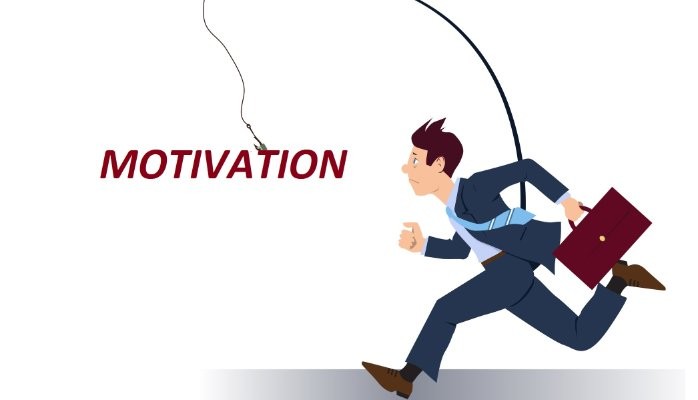At some point in our lives, we have all required a little bit of motivation. In the previous little while, that need in all likelihood has developed. Who among us hasn’t been working toward slimming down since the pandemic? Who hasn’t wanted to counterfeit a little excitement at joining one more Zoom call? Who hasn’t been attempting to become amped up for traveling once more into the workplace for an everyday job (longer in the event that you include the drive)? Feeling “meh” is an indication of our times. A way to regain our enthusiasm, drive, and drive to pursue the things we say we want most is incentive motivation.
How Does Incentive Motivation Work?
An area of psychology that focuses on human motivation is called incentive motivation. What motivates us to move from being couch potatoes to marathon runners? Why do we choose to get the Covid vaccine or not? What causes us to behave or think in a certain way? The way goals influence behavior is the focus of incentive motivation. It appears to work if the incentive has significance for the individual.
The Origins of Incentive Motivation The origins of incentive motivation can be found in our childhoods. Many of us, I’m sure, have similar memories of being told to “eat all our vegetables” in order to “grow up to be big and strong,” and if we did eat those vegetables, we would get a weekend trip to our choice of carnival, amusement park, or playground. We were sufficiently motivated by that outing’s incentive to alter our actions.
As we get older, incentive motivation continues to play a significant role in our choices. For instance, despite the fact that we may not have liked the idea of studying for years, earning high grades, pursuing advanced degrees, and ultimately graduating with a significant amount of debt from student loans, a lot of us made the decision to do so. Why? because powerful motivators included a career goal, a coveted title, financial rewards, and the satisfaction of doing something we love.
One specialist who trusts in the force of motivator inspiration is weight the executives master, co-writer of the book Territory of Thin, and fellow benefactor of the groundbreaking get-healthy plan of a similar name, Dr. Holly Wyatt. Her work with her clients has demonstrated consistently that when inspiration misfires, motivators can reignite those persuasive fires.
“Eat more veggies, work out, monitor my weight: These and other methods work, but you have to keep doing them. One strategy is to automate your efforts by establishing rituals and routines. What’s more, en route, the utilization of both outer and inside inspirations assists keep with peopling on target. Things outside of ourselves that motivate us are known as external motivation sources. They are potent, like adding fuel to a fire. Yet, they may not keep going extremely lengthy. Interior inspirations are more integrated with the motivations behind WHY we need to arrive at our objectives. We spend a lot of time in my State of Slim weight loss program “peeling back the onion” to discover the WHY. Although they may take longer to develop, I believe that internal motivators are more potent, particularly in the long run. They’re the hot coals that keep our persuasive flames consuming.”
Instances of Motivator Inspiration
In the method of impetus inspiration, well defined for the outside inspirations, Dr. Wyatt moves her clients to focus on changing only one way of behaving that will assist them with arriving at their weight reduction objectives. Clients should then consent to a “carrot” or a “stick” as either their prize for achieving what they say they will do or as their discipline for missing the mark. These incentives might include a spa day if they do what they say they will, or they might be punished for not following through by having to run up and down the stairwell of their apartment building a certain number of times.
The incentive must be something that matters to them enough to influence their actions in achieving those goals, and the goal must be something they really want. Some people are more motivated by a meaningful reward, such as a carrot, while others are more motivated by a negative consequence, such as the loss of a privilege, known as the stick.
Companies and government agencies are currently offering perks to people who get the Covid vaccine, which is another example of incentive motivation. Lottery tickets, cash prizes, concert tickets, free tickets to events, discounts on food, and even free drinks at local bars and restaurants are being offered all over the country. The variety of incentives that are being presented to the general public to encourage vaccination rates is quite creative and fairly extensive. These incentives are social, financial, and even morally motivated. However, is this specific motivator inspiration working?
Recollect that a key to impetus inspiration working is on the off chance that the singular puts significance on the prize being gotten on a definitive objective. Therefore, not all incentives will inspire individuals in the same manner. “The value of an incentive can change over time and in different situations,” asserts Stephen L. Franzoi.
What distinguishes incentive motivation from other forms of motivation?
One type of externally driven motivational force is incentive motivation. While rewards can have a significant impact on behavior, there may be other options that are more in line with who you are and what motivates you to move toward your objectives.
Dread Inspiration
In numerous ways, being persuaded by dread is the precise inverse of being roused by motivators. Avoiding a painful punishment or consequence is what motivates someone to act rather than seeking a reward. For instance, married couples may “forsake all others” for fear of being “taken to the cleaners” by their spouses if their infidelity is exposed, rather than out of love or commitment.
Another model wherein dread turns into the extraordinary inspiration is one we’re finding out about increasingly more as we’re emerging from this pandemic — the anxiety toward being poor. The anxiety toward being poor has kept many individuals in positions they disdain. As headlines highlight the number of workers quitting and refusing to return to the way things were, we only now see a reversal.
Motivation for Social Action Humans are social creatures. A powerful motivator is a desire to belong. This kind of friendly inspiration starts one’s conduct in manners that, ideally, bring about an individual being acknowledged by a specific gathering or others.
The ability of the Internet and the explosion of social media engagement to motivate us to be part of what we used to call “the cool kids” or “cliques” (jocks, nerds, artists, gamers, etc.) in school has been both positive and negative. We’ve probably all been in situations where we felt like we had “not been chosen,” whether it was to be on a team to play a game or to be the winning candidate for a job or a competition. Social dismissal can represent the moment of truth us.










